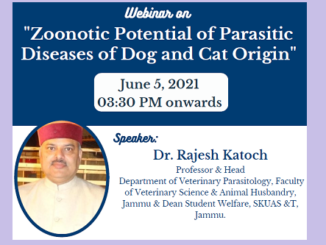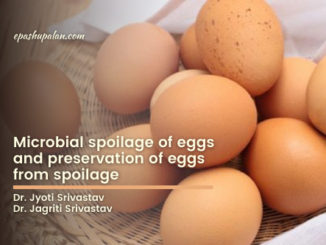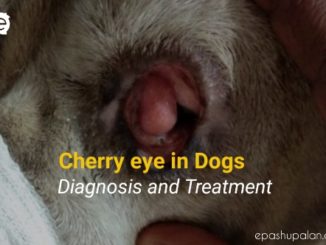Introduction
Egg binding/dystocia is an emergency condition in which delayed passing of the egg through the reproductive tract and it is a life threatening condition if not treated at appropriate time. Mostly female birds which are not exposed to mate are commonly affected. The cause for egg binding is multi-factorial. Egg binding is more common in pet birds such as cockatiels, parakeets, budgies, lovebirds, canaries and finches (Reddy et al., 2018).

Etiology
- Vitamin deficiency
- Mineral deficiency (especially calcium)
- Malnutrition
- Obesity
- Very young and very old age
- Excessive egg production
- Restricted movements/lack of exercise
- Adverse environment
- Malformed/improperly positioned eggs
- Systemic illness
- Oviduct muscle dysfunction (Myositis), salphingitis, metritis
- More attachment to the mirrors/toys are more prone for egg binding (Reddy et al., 2018)
Clinical presentations
- Excessive/frequent straining
- Wagging of the tail
- Distension of the abdomen
- Imbalance on perches
- Difficult in passing droppings
- Nesting and clucky behaviour
- Open mouth breathing/dyspnoea
- Exaggerated movements of the sternum and ribs
- Reduction in appetite
- Continuously sit on the floor of the room
- Cloacal prolapse
- Flaccid vent
- Presence of pasty droppings on cloaca and vent
Diagnosis
- The diagnosis of egg binding/dystocia in pet birds is based on owner’s history and clinical signs ((Reddy et al., 2018).
- Abdominal and coelomic palpation for the detection of eggs however soft shelled egg is difficult to palpate.
- Plain radiography of the abdomen will confirm the presence of egg shell.
- Abdominal ultrasonography is used to examine the different visceral organs and reproductive tract.
Treatment
- Bird should be kept in a dark and quiet environment
Manual expulsion of the egg:
- Calcium gluconate 5-10 mg/kg body weight IM for every 4 hours, tube feeding of highly digestible sugar supplements, and topical intra-cloacal administration of PGE202-0.1 mg/kg body weight gel is given prior to manipulation.
- After lubrication, cloaca can be manipulated to expel the egg (care must be taken while manipulating, egg should not be pushed up against the kidneys and spine).
- Ovocentesis and egg collapse is necessary in distressed and dyspnoeic birds (Bob Doneley, 2010).
- Ovocentesis is done by inserting the syringe into the egg through cloaca or abdomen; the contents are aspirated and collapsed to reduce the size. But this procedure may cause damage to the oviduct hence salphingohysterectomy may needed at later stage (Bob Doneley, 2010).
Surgical removal of the egg:
- Coeliotomy or caesarean section is needed in some cases but this may be considered as the last resort.
- Under general anaesthesia (mask induction with isoflurane) with endotracheal intubation coeliotomy or caesarean section is performed to remove the egg.
Care/management
- Provision of fluid therapy, supplementation of vitamins, minerals and broad spectrum antibiotics and steroids to control the infection and pressure induced pain.
Prognosis
- Earlier case presentation may have better prognosis.
- Simple cases can have excellent prognosis.
- Guarded prognosis in birds which are about to collapse, dyspnoeic and not using its hind legs.
Conclusion
Selection of genetically resistant birds, maintenance of proper breeding times, age of breeding, providing the suitable environmental conditions and in caged birds provision of activity can control the egg binding condition in some extent.
Reference
- Bob Doneley. Avian medicine and surgery in practice companion and aviary birds. Manson Publising Ltd., Edn. 2010. ISBN: 978-1-84076-112-2. pp no. 216-217.
- Reddy, B. S. and Sivajothi, S. 2018. Egg binding in budgerigar. Int J Avian & Wildlife Biol. 3(5): 352-353.
|
The content of the articles are accurate and true to the best of the author’s knowledge. It is not meant to substitute for diagnosis, prognosis, treatment, prescription, or formal and individualized advice from a veterinary medical professional. Animals exhibiting signs and symptoms of distress should be seen by a veterinarian immediately. |






Be the first to comment